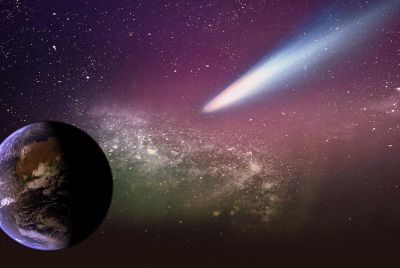The Agonising Wait: Jamaica's Hurricane-Hit Communities Still Cut Off From the World
Jamaica's Hurricane Melissa death toll rises amid rescue efforts.

How do you count the dead when you cannot reach them?
This is the agonising question facing Jamaica days after Hurricane Melissa, one of the worst storms in the nation's history, tore the island apart.
The official death toll has climbed to 28, but rescuers and officials fear the true number is tragically higher.
Dozens of communities, particularly in western Jamaica, remain entirely cut off, silenced by washed-out roads and a collapsed power grid.
The True Cost of Hurricane Melissa Remains Hidden
The Jamaican government confirmed on Saturday night that the death toll from Hurricane Melissa had risen to 28, up from a previous count of 19. A government statement noted that additional reports of possible fatalities are still being verified.
Hurricane Melissa made landfall in Jamaica on Tuesday as a catastrophic Category 5 storm, rapidly becoming one of the worst in the country's history.
The devastation was not confined to the island; at least 30 people were also killed in Haiti, which suffered severe flooding despite not taking a direct hit.
'We Don't Know the True Picture': Why Hurricane Melissa Left Communities in the Dark
The primary challenge for rescuers is simple: access.
Vast swathes of western Jamaica are isolated, cut off by downed trees and obliterated roads. A majority of Jamaicans are still without telephone service or electricity. Authorities involved in the rescue operations admit they have no real idea of the death toll in these areas.
In St. Elizabeth Parish, in the southwest of the island, Fire Superintendent Kimar Brooks said the authorities had not reached about 15 of the parish's roughly three dozen communities.
Esther Pinnock, a spokeswoman for the Jamaica Red Cross, confirmed that isolated communities in five other parishes also sustained significant damage.
"There are a significant number of communities that have not been reached," Ms Pinnock said, noting that some had small pockets of people. "We don't know the true picture of what is happening in the western parishes."
It was only on Saturday, four days after landfall, that the Red Cross even began hearing from its own branch members in the west.
"There is a strong possibility that more dead bodies will emerge," she added, "and as a result of that, a heightened death toll."
'You Are Not Forgotten': The Desperate Race to Save Survivors of Hurricane Melissa
John Lyon, the executive director of Haiti Air Ambulance, called the current death toll an early estimate.
Mr Lyon is flying helicopter rescues and delivering satellite internet devices to remote areas. He said people in these cut-off communities told him that some of the storm's dead were still inside their collapsed houses.
The coalition of organisations he is working with, Operation One Love, airlifted one person on Saturday who later died.
"That's a microcosm of what I think happened throughout western Jamaica," Mr Lyon said. "This is one of the worst disasters I have ever seen."
He noted that the Jamaican authorities had asked his coalition if they could help recover bodies. He told them, "You're still in search and rescue mode."
The Jamaican government insists that help is mobilised. Desmond McKenzie, Jamaica's minister of local government, said that more than 500 roads had been cleared, opening up blocked neighbourhoods.
"Work is being done, but the challenges here are extreme," he said.
Daryl Vaz, Jamaica's minister of energy and transportation, promised a coordinated effort between the government, military, and nonprofits to reach as many people as possible.
"So I would say to all of those persons who are still out there waiting and looking up in the sky, that you will start to see movements today, and you're going to hear a lot of activity," Mr Vaz said on Friday.
"You probably are feeling that you are forgotten," he added. "You are not forgotten, and you will never be forgotten."
Hurricane Melissa and the 252 MPH Gust: A New Era of Storms?
Just landed after an absolutely insane flight with @NOAA_HurrHunter into #Melissa just before landfall in #Jamaica. I was processing the dropsonde data before it went out. When I saw the 113 m/s (219 knots) just above the surface I couldn't believe it. My display only goes to 100… pic.twitter.com/v1hiJ0eMsC
— Andy Hazelton (@AndyHazelton) October 28, 2025
The storm left more than 60 people dead across Haiti, Jamaica, and the Dominican Republic. Its winds and storm surge damaged tens of thousands of homes and hospitals, marooning entire communities.
But for many hurricane experts, Melissa also provided terrifying evidence of the increasing influence of a warming ocean on an evolving hurricane landscape.
Scientists tracking the storm were amazed by its extreme winds, periods of rapid intensification, and the way it skipped a typical replacement of its inner core.
On 28 October, Andy Hazelton was aboard Kermit, one of the National Oceanic and Atmospheric Administration's (NOAA) reconnaissance aircraft.
An associate scientist at the University of Miami, Hazelton was processing data flowing in from weather instruments dropped into the storm. At one point, he watched a squiggly line showing a wind gust that veered right off the graph display.
"I couldn't believe it," he posted on X. The data point? A spot wind gust of 219 knots. That's 252 mph. "That's booking," said James Franklin, a retired former branch chief for the hurricane specialist's unit at the National Hurricane Centre.
Mr Franklin believes the measurement will verify. If it does, it would be the highest speed ever recorded in a tropical cyclone by a dropsonde, one of the workhorse instruments used for decades to measure conditions inside storms.
With peak sustained winds of 185 mph, Hurricane Melissa became one of the two strongest Atlantic storms on record to make landfall, according to preliminary data.
If, as some suspect, the hurricane's wind speeds are adjusted upward during the post-storm review, Melissa could set a new, terrifying bar for the fastest winds on record for a landfalling Atlantic storm.
© Copyright IBTimes 2025. All rights reserved.





















